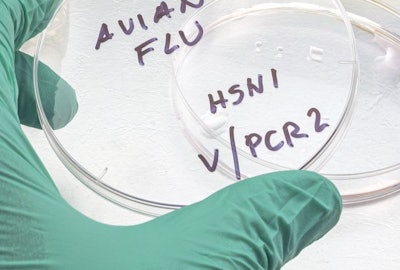
Even though it maybe shouldn’t have been, it was somewhat surprising to learn that on August 22, highly pathogenic avian influenza (HPAI) was confirmed a commercial broiler breeder flock in California.
After all, it had been nearly a month since HPAI was found in a commercial flock in the United States. And then there’s the fact that we’ve all been told that viruses tend to not thrive in warm weather. We also know that during the 2015 HPAI outbreak in the United States, the last confirmed case occurred in June.
While it is true that the number of HPAI cases in backyard flocks and wild birds have slowed significantly during the summer months, the reality is they are still being confirmed.
New avian flu cases in August
While the only confirmed HPAI case in commercial poultry in August was the previously mentioned California case, there have been more cases in non-commercial flocks.
Since August 2, two cases were confirmed in two backyard flocks in Washington, two backyard flocks in California, one backyard flock in both Pennsylvania and Alaska, a sentinel flock in Florida and at an animal rescue/rehabilitation facility in Georgia, according to information from the United States Department of Agriculture (USDA) Animal and Plant Health Inspection Service (APHIS).
APHIS also has been tracking confirmed cases of HPAI in wild birds. As of August 24, there were 90 of such cases this month. States where these detections were made include Oregon, California, Florida, Alaska, Washington, New Jersey, Wisconsin, North Dakota, Nevada and Colorado.
Veterinarian’s viewpoint
As you can imagine, the dominant topic of discussion at last week’s Kansas Ag Summit – which took place before the confirmation in California occurred – was HPAI.
Dr. Sara McReynolds, Kansas deputy animal health commissioner, talked about how the virus has survived in wild bird populations in 2022, which is something that was not apparent in 2015. And HPAI is surviving in warmer temperatures, specifically mentioning the hot weather in Florida and Georgia.
Many of the birds that are spreading the virus are vultures, McReynolds said, and APHIS verified.
“You can’t contain that,” McReynolds said.
With these revelations, McReynolds provided these words of caution: “There’s a lot of things to be concerned of, and we certainly are anticipating it could be a long haul.”
However, McReynolds, who also spoke about present-day perceptions about avian influenza vaccination while at the summit, said there is one thing in particular that has prevented the HPAI outbreak from not becoming more widespread.
“It’s only because of good biosecurity in the commercial operations,” she said.
Read our ongoing coverage of the global avian influenza outbreak.

















